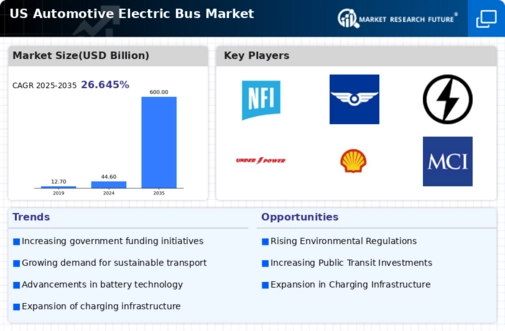The US Automotive Electric Bus Market is experiencing significant growth driven by increasing concerns over environmental sustainability, advancements in battery technologies, and contributions toward reducing urban emissions. As various stakeholders, including government entities, transit agencies, and private operators, strive to enhance public transportation systems, electric buses are becoming an integral part of these infrastructures. This has spurred competition among key players in the market, leading to innovation in design, efficiency, and customer service.
Companies in this sector are also focusing on expanding their geographic reach and establishing strategic partnerships to enhance their presence in this dynamic marketplace. The competitive landscape is characterized by a mix of established manufacturers and new entrants, all looking to gain market share and meet the growing demand for zero-emission transport.NFI Group plays a pivotal role in the US Automotive Electric Bus Market by capitalizing on its established reputation for high-quality manufacturing and innovation in bus technology.
The company is recognized for its strong commitment to sustainability and customer satisfaction, which allows it to maintain a competitive edge. Its diverse product portfolio, which includes a range of electric buses, showcases the company's ability to cater to varying needs from different transit authorities across the US. NFI Group's strength lies in its extensive experience in the sector, allowing it to leverage advanced engineering and manufacturing capabilities to produce efficient and reliable electric buses.
The company's proactive approach to developing strategic alliances with battery suppliers and technology firms further enhances its position in the market.New Flyer, as a subsidiary of NFI Group, is firmly established in the US Automotive Electric Bus Market, distinguishing itself through its focus on innovation and sustainability. The company offers a robust selection of electric buses and environmentally friendly transportation solutions, primarily catering to transit authorities seeking to modernize their fleets.
New Flyer is recognized for its commitment to research and development, resulting in cutting-edge products optimized for performance and energy efficiency. The company has successfully executed mergers and acquisitions that bolster its operational capabilities and market reach, solidifying its status within the industry. Moreover, with a substantial market presence, New Flyer benefits from strong relationships with various stakeholders in the public transportation sector, enabling it to meet evolving transportation demands and further advance electric bus adoption across the United States.













